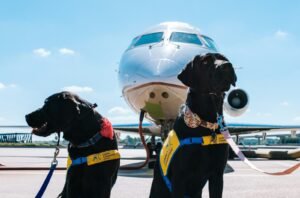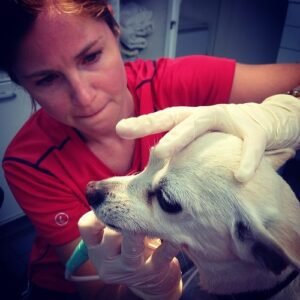Despite their athletic nature, hunting dogs can be overweight dogs and can fall into a sedentary nature if not provided with enough exercise. Without an exercise program, these otherwise fit, energetic breeds can become lazy and inactive.
An estimated 40% of dogs are considered to be overweight or obese. The most common cause of overweight dogs is obvious, their caloric intake is greater than what is burned off in a day. Excess calories turn into fat, and over time this causes the dog to gain weight.
Hunting dogs fed a high calorie, protein dense food for athletic dogs are at particular risk for canine obesity, as their exercise level must be kept high in order to “use up” the calories that they are being fed. A dog being fed a high performance diet must adhere to strict exercise regimen, in order to prevent excessive weight gain. Fat dogs out hunting is not a pretty sight!
Veterinarians use a standardized Body Condition Score system to categorize overweight dogs. The scoring system runs from 1-9, with one being extremely thin, and 9 being morbidly obese.

As a general rule, the “ideal” range for the body condition score for dogs is between a 4 and 5.
At a Body Condition Score (BCS) of 4 and 5, the dog should have ribs that can be easily felt under the skin, but not seen. The dogs should have a waist (a narrowing of their width behind the ribcage), as well as an abdomen that is “tucked up” when seen from the side.
Dogs with a BCS of 6 and 7 are too heavy. Their ribs may be just barely felt under the skin.
Instead of a waist, they are “flat” from ribs to hindquarters. Overweight dogs in this category should have their exercise level increased, and caloric intake decreased. With a BCS of 8 or 9 they are considered morbidly obese or are commonly called fat dogs.

Their ribs cannot be felt over the skin, and have areas of fat deposits over their back, base of the tail, chest, neck or legs. Instead of a waist, they have an abdominal bulge and are wider in the abdomen than in the hips.
Their abdomens may appear distended and enlarged, and hang below the level of the ribcage. These dogs should be evaluated by a veterinarian for underlying health problems, as well as begin a weight reduction program under veterinary supervision.
Beware of Diabetes in dogs and other health ailments
Overweight dogs at this level are at risk for a variety of health problems: severe joint, muscle and ligament problems, as well as respiratory and cardiac complications. Diabetes in dogs is also a threat.
It is important to remember that just because your dog was bred for an athletic lifestyle, his energy level and fitness depend on you.








